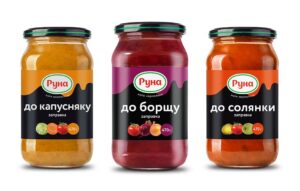
The Chinese company SHAC will invest 40 million euros in the construction of a plant in Novi Sad, Serbia. The company has already signed an agreement with the German automaker BMW. The plant is expected to open by the end of 2025, with the first serial deliveries to European customers scheduled for the first quarter of 2027.
Other Chinese investment projects in Serbia:
Energy sector: In May 2024, the Serbian Ministry of Mines and Energy signed two agreements with Chinese companies totaling about €2.7 billion. These investments include the construction of an oil and petroleum product refinery in Smederevo and the construction of a solar panel plant in Paracin.
Infrastructure: The Chinese company Shandong High-speed Group is involved in the construction of the Belgrade-Zrenjanin-Novi Sad highway, as well as in the reconstruction project of the Constantine the Great airport in Niš.
Automotive industry: Mei Ta has invested 60 million euros in the construction of a plant for the production of automotive components in Obrenovac.
These projects demonstrate the expansion of Chinese investment in various sectors of the Serbian economy, contributing to industrial development and job creation in the region.
Source: https://t.me/relocationrs/741

Agrotrade agricultural holding has started sowing mustard in the fields of Kupiansk district, Kharkiv region, with 600 hectares of land allocated for the crop, the company’s press service reported on Facebook.
“Mustard is the crop that best tolerates deteriorating weather conditions, so we started with it. In addition, we continue sowing spring wheat in the weakened areas allocated for winter wheat. Currently, the soil is well cultivated and has sufficient moisture, which is conducive to high-quality sowing. So we don’t see any risks for the sowing campaign yet,” said Oleksandr Ovsyanyk, Director of Agrotrade’s Agricultural Department.
He added that the company plans to start sowing sunflower and corn in parallel on April 11, and the sowing campaign is expected to be completed by May 10.
The Agrotrade Group is a vertically integrated holding company with a full agro-industrial cycle (production, processing, storage and trade of agricultural products). The company cultivates over 70 thousand hectares of land in Chernihiv, Sumy, Poltava and Kharkiv regions. Its main crops are sunflower, corn, winter wheat, soybeans and rapeseed. It has its own network of elevators with a simultaneous storage capacity of 570 thousand tons.
The group also produces hybrid seeds of corn and sunflower, barley, and winter wheat. In 2014, a seed plant with a capacity of 20 thousand tons of seeds per year was built on the basis of Kolos seed farm (Kharkiv region). In 2018, Agrotrade launched its own brand Agroseeds on the market.
The founder of Agrotrade is Vsevolod Kozhemiako.

The agricultural holding Continental Farmers Group has started planting potatoes as part of the spring 2025 sowing campaign, and planting work is underway in fields in Ternopil and Lviv regions, the company’s press service reports.
According to the report, in 2025, 2130 hectares will be allocated for potatoes, of which 60% are chip varieties, 24% are table varieties, and 16% of the area will be occupied by seed plots. Continental explains the partial 13% increase in potato acreage compared to last year, in particular, by the increased demand for table potatoes and additional demand for chip potatoes, which the company works with under a contractual model with guaranteed purchases.
Continental noted that the early spring warming allowed the company to prepare the soil for potatoes in time and enter the planting season optimally.
“The weather conditions so far give us every reason to be optimistic about potatoes this season. If they continue to favor us, we plan to complete planting the main areas by the end of April. Our main goal is to deliver consistently high yields and quality products that our partners and consumers expect. To be confident in our results, we have all the necessary technical and technological resources,” emphasized Konstantin Shityuk, COO of Continental Farmers Group.
The company’s key innovations in potato growing technology this year include the expanded use of precision farming tools and fertilization based on agrochemical analysis. New cultivation protocols were also introduced based on the results of 2024 research to optimize the disease protection scheme.
In total, in 2025, Continental allocated 96 thousand hectares for spring crops and 84.9 thousand hectares for winter rape, wheat and barley.
Mriya Agro Holding and CFG, united under the name Continental Farmers Group, have been operating as a single business since November 2018, when Mriya entered into an agreement with international investor Salic UK to sell its assets.
Salic was founded in 2012. Its sole shareholder is the Saudi Arabian Public Investment Fund, which invests in agricultural and livestock production.

One of the largest grain market operators in Ukraine, JV Nibulon LLC, has started the spring crops sowing campaign, for which it will allocate 36 thou hectares, which corresponds to the area under spring crops last year – 37 thou hectares, the press service of the agricultural holding reported on Facebook.
According to the report, corn will be Nibulon’s flagship crop in the 2025 season, just like last year. In addition, the area under soybeans will be doubled and the area under sunflower will be halved. This is due to the price expectations for this year’s grain crops and the forecast of a better economic result.
“We are using seeds sparingly, with seeding rates of 55-70 thou/ha for corn, 350-500 thou/ha for soybeans, and 45 thou/ha for sunflower (Mykolaiv region). In particular, 800 tons of soybean seeds of our own production have been laid and prepared for sowing,” the agroholding said.
Sunflower sowing, which is starting earlier than planned due to the rapid rise in temperatures and soil moisture deficit, has started in the Mykolaiv cluster. After April 12, the company plans to start sowing corn in Cherkasy, Vinnytsia and Khmelnytsky regions. Given favorable conditions, Nibulon’s farmers expect to complete the sowing campaign by mid-May, as they have the technical capability to sow 2-2.5 thousand hectares per productive day.
Oleg Veselov, Director of Agricultural Production at Nibulon Oleg Veselov noted that there is not enough moisture in the soil in the regions of the agricultural holding’s presence, but there is hope for April and May precipitation, so the company expects the gross harvest of spring crops to be 180 thousand tons of corn, 25 thousand tons of soybeans, and 70 thousand tons of sunflower.
Nibulon added that winter crops in Mykolaiv region are in good and satisfactory condition.
Nibulon JV LLC was established in 1991. Prior to the Russian military invasion, the grain trader had 27 transshipment terminals and complexes for receiving crops, a one-time storage capacity of 2.25 million tons of agricultural products, a fleet of 83 vessels (including 23 tugs), and owned the Mykolaiv Shipyard.
“Before the war, Nibulon cultivated 82 thousand hectares of land in 12 regions of Ukraine and exported agricultural products to more than 70 countries. In 2021, the grain trader exported the highest ever 5.64 mln tons of agricultural products and supplied record volumes to foreign markets in August – 0.7 mln tons, in the fourth quarter – 1.88 mln tons, and in the second half of the year – 3.71 mln tons.
Currently, the grain trader is operating at 32% of capacity, has set up a special unit to clear agricultural land of mines and had to move its headquarters from Mykolaiv to Kyiv.

PrJSC Lutsk Foods (Volyn region), one of the largest producers of grocery products in Ukraine, received UAH 32.28 million in net profit in 2024, which is 29.1% less than a year earlier.
According to the agenda of the annual general meeting of shareholders scheduled for April 30 this year in remote mode, shareholders are proposed to leave the company’s net profit for 2024 in the amount of UAH 32.284 million undistributed.
In addition, the shareholders are proposed to approve the report of the company’s supervisory board for 2024 and recognize the work of the supervisory board as satisfactory based on the results of 2024, approve the conclusions and measures based on the results of the review of the audit report of Grant Thornton Legal LLC and extend the work with this auditor for a year.
The shareholders should also approve a number of loan agreements concluded in 2023-2025 with PJSC Bank Vostok and allow the Chairman of the Management Board to enter into significant transactions during the year to attract investments in the modernization of production facilities and production premises, the maximum aggregate value of each of which should not exceed UAH 300 million.
According to the Opendatabot service, in 2024, Lutsk Foods PJSC reduced its revenue by 3.3% to UAH 828.13 million, while its debt obligations increased by 26% to UAH 118.36 million and its assets by 14.8% to UAH 304.96 million. The number of employees decreased by 15 people to 340. The authorized capital is UAH 16 million. The ultimate beneficiary is Oleg Khodachuk through the Closed Non-Diversified Corporate Investment Fund Theseus JSC.
PJSC “Lutsk Foods” was founded in 1997 on the basis of the Lutsk City Food Plant, established in 1945. The company produces a wide range of tomato paste-based sauces, as well as ketchup, adjika, mustard, mayonnaise and various types of vinegar under the Runa, Ridniy Krai and Sribnytsia trademarks. Since 2009, the company has been cooperating with a number of retail chains and produces more than 40 products under their private label. Lutsk Foods exports its products to the markets of more than 20 countries.